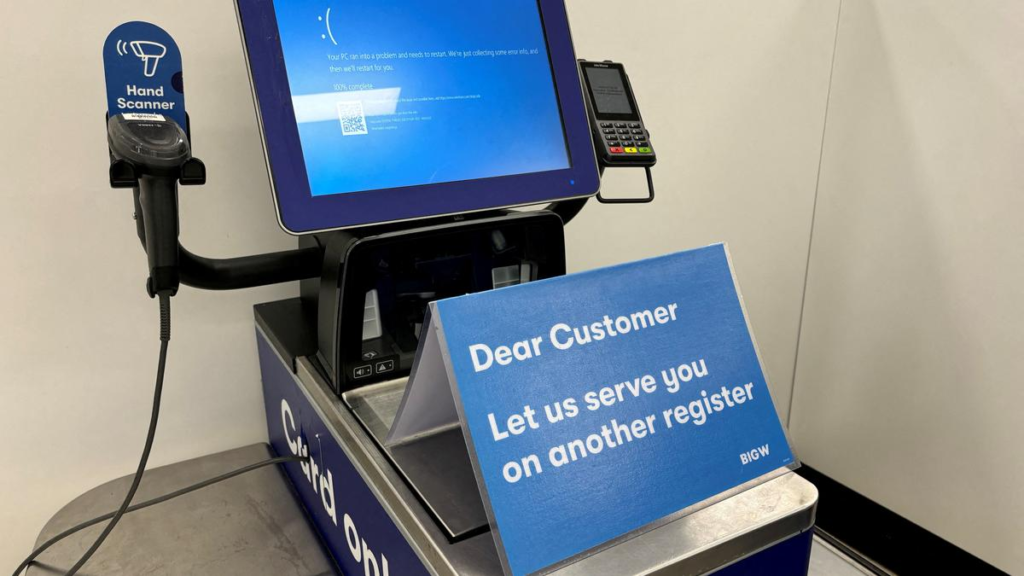On a seemingly ordinary day, the tech world was shaken by a significant Microsoft outage that rippled across various industries. From travel to finance, businesses found themselves grappling with unexpected service disruptions as crucial systems went offline. Airlines faced delays and cancellations, banks struggled with transactions, and the stock market felt the tremors of uncertainty. This widespread Microsoft service outage serves as a stark reminder of our reliance on technology and how even minor hiccups can lead to major ramifications. Let’s dive deeper into the chaos unleashed by this incident and explore which services were most affected.

The Impact on Airlines and Travel

The Microsoft Outage had significant ripple effects across the airline and travel sectors. Many airlines rely on Microsoft’s cloud services for booking systems, check-in processes, and operational management. When these services faltered, travelers faced delays and cancellations.
Passengers found themselves stranded as flights were grounded or rescheduled. Airports experienced chaos with long lines at check-in counters and a surge in customer inquiries.
Travelers attempting to access airline apps or websites often encountered error messages, complicating their plans further. This disruption not only frustrated passengers but also impacted businesses that depend on timely air travel.
In addition to immediate inconveniences, the knock-on effects could be felt in hotel bookings and transportation logistics. The interconnected nature of modern technology means that one major service interruption can disrupt multiple industries simultaneously.
How Banks and Financial Institutions Were Affected

The recent Microsoft outage sent shockwaves through banks and financial institutions worldwide. Many of these organizations rely heavily on Microsoft’s cloud services to manage transactions, customer data, and internal operations.
As systems went offline, customers faced delays in accessing their accounts. Some even reported issues with transferring funds or making payments. This disruption left many feeling frustrated and concerned about their finances.
Financial institutions also experienced challenges in processing loan applications and credit assessments. The outage hindered communication between departments, slowing down critical decision-making processes.
Cybersecurity measures were put to the test as well. With systems down, fraud detection protocols struggled to function effectively, raising alarms among security teams.
These service interruptions not only affected daily operations but also strained trust between banks and their clients during a time when reliability is paramount.
Stock Market Reaction to the Outage

The Microsoft outage sent ripples through the stock market, creating an atmosphere of uncertainty. Investors watched nervously as major indices fluctuated throughout the day.
Tech stocks bore the brunt of this disruption. Companies heavily reliant on Microsoft services saw their share prices dip sharply. Analysts noted a wave of sell-offs as panic set in among traders.
Conversely, some sectors benefitted from this chaos. Airlines and travel companies gained traction with customers seeking alternatives amidst service interruptions. This shift showcased how interconnected industries are affected by technology failures.
Market sentiment leaned toward caution, with many investors choosing to hedge their bets against further service disruptions. Reactions varied widely across different sectors and investor strategies during this unprecedented event in tech history.
Other Services and Industries Impacted by the Outage
The Microsoft outage sent shockwaves across various sectors beyond airlines and banking. Retailers experienced disruptions in point-of-sale systems, leaving customers frustrated at checkout lines. Many stores rely heavily on cloud services for inventory management, leading to significant hiccups in operations.
Healthcare facilities faced challenges too. Patient records became temporarily inaccessible, causing delays in treatments and frustrating both staff and patients alike. This heightened the risk of service interruptions during critical healthcare moments.
Educational institutions were not spared either. Online classes stalled as platforms like Teams went offline, impacting students who depended on these tools for their learning experience.
Even government agencies reported issues with internal communications, hampering essential workflows. The ripple effects of this major outage were evident everywhere, showcasing just how interconnected our reliance is on technology today.
Steps Taken by Microsoft to Resolve the Issue
- Microsoft swiftly mobilized its technical teams to address the outage. Their first step involved identifying the root cause of the service disruptions affecting numerous platforms.
- Engineers worked around the clock, analyzing system logs and traffic patterns. This allowed them to pinpoint precisely where failures occurred.
- Real-time updates were provided through social media channels, keeping users informed about progress. Transparency was key during this unexpected crisis.
- Additionally, Microsoft deployed patches and rerouted server loads to stabilize affected services quickly. Teams collaborated with various partners and clients to ensure business continuity wherever possible.
- Once systems began recovering, extensive testing followed. This ensured that all functionalities were restored without further interruptions or complications for end-users.
Preventing Future Outages: What Can Be Done?
- Preventing future outages requires a multi-faceted approach. First, companies must invest in robust infrastructure. This includes enhancing servers and network reliability to withstand peak demands.
- Regular software updates are essential too. Keeping systems current can reduce vulnerabilities that might lead to service disruptions.
- Implementing comprehensive monitoring tools allows organizations to identify potential issues before they escalate into major problems. These tools provide real-time insights into system health and performance.
- Additionally, fostering a culture of communication is crucial within tech teams. When everyone understands their role during an incident, recovery becomes smoother and faster.
- Engaging with third-party experts for assessments can reveal hidden weaknesses in existing setups. Learning from past technology failures is vital for setting up safeguards against future incidents.
Conclusion
The recent Microsoft outage serves as a stark reminder of the fragility inherent in our interconnected digital world. With so many industries relying on technology, the implications of such service disruptions can be far-reaching and deeply impactful. Airlines faced significant delays, affecting countless travelers. Banks struggled to process transactions, leaving customers frustrated and anxious about their finances. The stock market saw fluctuations due to uncertainty surrounding these tech failures, impacting investor confidence and trading activity. Numerous other sectors also felt the sting of this major outage. From healthcare providers to retail businesses, the ripple effects were evident across various services and industries that depend heavily on Microsoft’s platforms.
As for Microsoft, they acted swiftly in response to the crisis. Their commitment to resolving issues shows an understanding of how critical uptime is for business operations worldwide. However, this incident highlights a pressing need for strategies that can prevent future outages from causing similar chaos. Navigating through technology downtimes requires resilience from all stakeholders involved—companies must assess their contingency plans while consumers remain vigilant during service interruptions.
This event has sparked conversations around improving infrastructure reliability and creating backup systems capable of withstanding unexpected challenges like these outages. As we move forward into an increasingly digital landscape, learning from such experiences will be crucial for maintaining smooth operational flow across all sectors affected by Microsoft’s recent service disruptions.
Stay tuned for more updates only on QAWire


